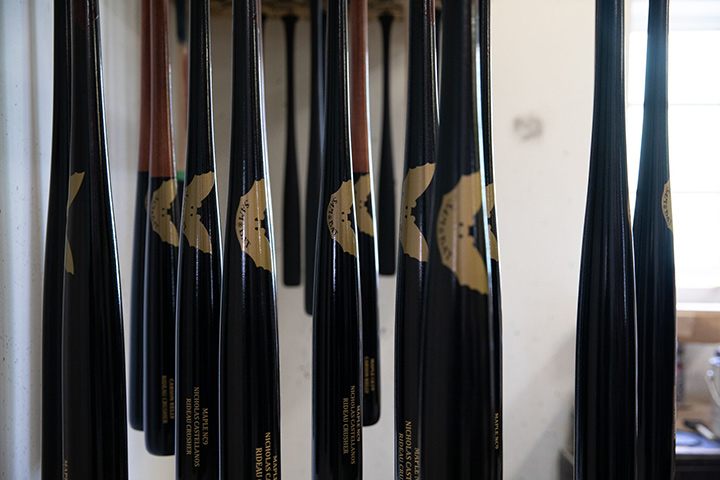Canada’s Sam Bat turns maple into winning baseball bats for pros

When Detroit Tigers first baseman Miguel Cabrera made recent baseball history, he did it with a Sam Bat handcrafted from sturdy maple.
In 2012, Cabrera became the first major league player since 1967 to earn baseball’s famed Triple Crown. He led the American League in batting average, home runs and runs batted in.

Sam Bat, located in Carleton Place, Ontario, about 45 km southwest of downtown Ottawa, celebrated Cabrera’s success.
This success has helped the company thrive as a Canadian innovator and enterprise. They produce bats for more than 20,000 customers around the world, including 100 professional players.
“This small company actually changed major league baseball and holds a tremendous number of records,” says Arlene Anderson, Sam Bat president and co-owner. “It’s quite astonishing how many major league players use our bats.”
Wielding a Sam Bat, Ryan Braun was the National League Rookie of the Year in 2007 with the Milwaukee Brewers and won the Most Valuable Player Award in 2011.
Barry Bonds played with the San Francisco Giants when he hit a record 73 home runs in the 2001 season using a Sam Bat.
José Bautista led Major League Baseball in 2010 with 54 home runs swinging a Sam Bat when he was with the Toronto Blue Jays.
“One of our catch phrases is ‘Set your own record with a Sam Bat’ and that’s because of all the records,” says Anderson.
The company, which now employs 11 people, began in Sam Holman’s garage in 1996 thanks to a bar room challenge. Holman’s friend, Bill Mackenzie, who was a scout for the Colorado Rockies, told him that major league power hitters were breaking too many bats. Traditionally, these bats were made with wood from the North American white ash tree.
Holman was a carpenter at Ottawa’s National Arts Centre at the time. He had a piece of maple left over from fixing a staircase and decided to shape it into a baseball bat. Maple is a very dense wood with a close grain, which means it holds together well under high impact.
After testing his maple bat with local baseball players, Holman managed to get one into the hands of Joe Carter of the Toronto Blue Jays. In 1997, the hometown ballpark crowd went wild when the 1992 and 1993 World Series hero Carter hit a home run in his first at-bat with a Sam Bat.
For several years, Sam Bat was the official bat of the Australian Baseball League. The company also exports to Taiwan, Korea, Japan, Italy, the Netherlands, France and the United States.
Anderson says that Canada’s free trade agreements are crucial for the company’s export success.
For instance, thanks to NAFTA, Sam Bats will continue to cross seamlessly over the border into the U.S. without tariffs.
Anderson says the same rings true for other countries. The company hadn’t exported many bats to Japan in recent years because of high tariffs.
The Comprehensive and Progressive Agreement for Trans-Pacific Partnership (CPTPP), Canada’s trade deal with the Asia-Pacific region, is opening up new markets for Sam Bat. Dealers in Japan have approached the company inquiring about their product because of the CPTPP. Sam Bat expects increased sales once the company begins exporting to baseball-loving Japan.
For a company with global reach, Anderson is proud that Sam Bat hasn’t lost its personal touch.
“It’s highly customized to that person and can even change throughout the season if a player gets injured,” says Anderson.
Anderson says the company has never considered going into mass production because of concerns about maintaining Sam Bat’s renowned quality standards and personal service. Employees put their heart and soul into meticulously handcrafting every baseball bat ordered.
“We’re extremely proud,” says Anderson. “We sell worldwide to the best pro players around the globe.”
- Date modified: